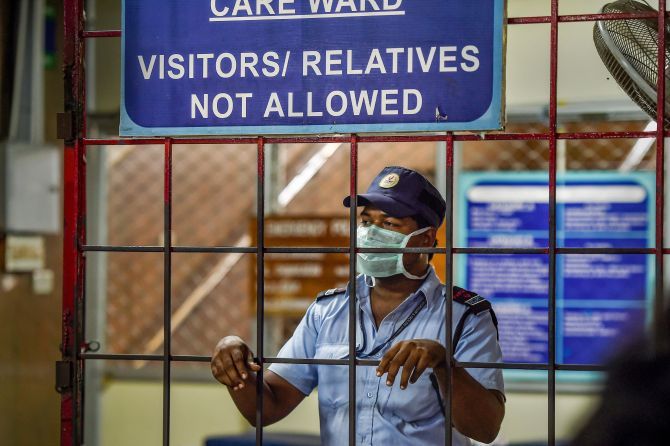Gold, forex assets, IT sector, pharma.
Devangshu Datta explains why each of these is a good hedge against market shocks at this time.

The black swan of coronavirus continues to impact the global economy. As of now, there are more infections popping up.
China is the world’s export engine but the virus has also started to cause disruptions in other economies.
We don’t know yet, if the disease will ease off once the seasons turn.
While vaccine development and medical research continue, it may take months, maybe years, before there are effective cures and vaccines.
Hence, we’re seeing a flight to safety. Many investors have started pulling out of Third World assets, and out of overall risky assets like equity. Some have moved to hard currency bonds, including government treasuries. Gold has also spiked up.
China is the world’s largest manufacturer and exporter, contributing about 16 per cent of global gross domestic product (GDP). It has near monopoly market share in certain areas and it features in most major manufacturing supply-chains. It has already lost a large chunk of productivity in the last two months. That has impacted global commodity markets as well.
Manufacturing could bounce back in China as the disease abates. But the loss of productivity in the service sector will not be so easy to make up. It’s also anybody’s guess what outbreaks in places like Italy (which is part of the EU with its open borders), Japan and South Korea will do. Moreover, multi-national companies might want to diversify supply chains but that will take time, and where will they go if other economies are also infected?
This is currently a supply shock -- a reduction of the capacity to produce goods and services. It could also lead to a demand shock if demoralised consumers cut expenses. We can reasonably assume that at least one quarter of global GDP will take a knock. While it’s possible that there will be a v-shaped recovery, there will also be a readjustment in global supply chains and a slowdown in growth while that happens.
India hasn’t been hit particularly hard yet, at least in terms of pullouts from the equity markets by foreign portfolio investors (FPIs). There have been sell-offs but there have also been relief rallies. FPIs remain solidly net positive on Indian equity in 2020, and domestic mutual funds were still seeing strong inflows till January.
There are the classic hedges for investors to consider, especially since the Indian economy is not likely to see a big acceleration in growth. One such asset is gold, which is the traditional haven in times of fear. Gold exposure is worth a look -- whether it’s taken through ETFs, or through the physical metal, or via NBFCs that lend against the metal.
Another hedge is forex assets. Hard currencies are almost guaranteed to appreciate against the rupee and other Third World assets. Apart from investing abroad directly, investors could look at the IT sector. IT hasn’t done well for a while but if there’s a rupee depreciation through 2020, the industry will see inflows.
Pharma is an interesting case. China is a huge supplier of APIs (active pharmaceutical ingredients) and it’s no secret that inventories are running low across the world because Chinese manufacture is currently in lockdown. We could see critical shortages across the global pharma industry. Indian pharmaceutical companies could struggle to cope with shortages and the inevitable price increases that accompany shortages.
If the epidemic levels off, there will, however, be a move back towards risky assets across the world. In that case, positions in gold will probably lose value. Hard currency assets could, however, remain a good hedge even if the disease eases off.
The rupee is in a tight spot. A large fiscal deficit is officially being underestimated in the estimates for 2019-20. The fiscal deficit will stay high in 2020-21, as well. Once GDP estimates correct, the rupee will tend to see more downward pressure. But even if the rupee weakens, overall exports might not grow much because of the negative external factors.
If we look at the rupee’s history, it stays stable for fairly long periods, interspersed by sudden, jerky drops. This could be a year when the next major depreciation comes along.
A high fiscal deficit, and poor export performance, are two possible triggers. There may be an FPI selloff given the coronavirus panic. There might also be a fall in foreign direct investment, given the poor optics of riots, and policy interactions with Vodafone and Amazon.












 © 2025
© 2025